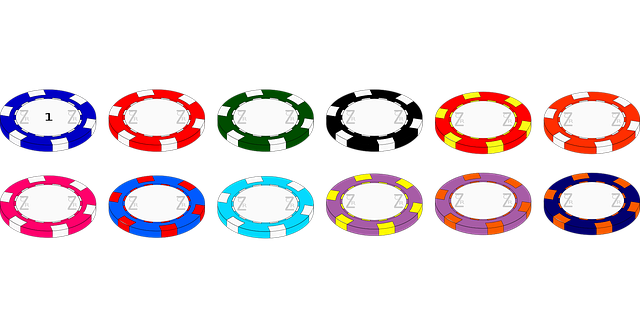Seven-Card Stud, a timeless Poker Games favorite, combines luck and skill as players aim to create the best five-card hand from seven dealt cards. Hand rankings follow standard rules, with betting rounds allowing checks, bets, calls, or folds. Various betting limits and strategic considerations make it appealing for both casual and experienced players, with position and board predictions key to success in this classic Poker Games variant.
Seven-Card Stud is a captivating poker game that blends strategy, luck, and skill. This classic game, one of many popular poker games, involves players receiving seven cards throughout three rounds of betting. Understanding hand values and mastering the betting structure is key to success. Delve into this article to explore advanced strategies that will elevate your game, helping you navigate the complex world of Seven-Card Stud.
- Overview: Seven-Card Stud Explained
- Rules: Hand Values and Betting Structure
- Strategy: Advanced Tips for Success
Overview: Seven-Card Stud Explained

Seven-Card Stud is one of the classic poker games that has been captivating players for decades. It’s a variant where each player receives seven cards, making it a blend of luck and skill. The game unfolds in rounds, with betting opportunities after every deal, allowing players to strategize based on their hand strength.
In this dynamic Poker Games version, the objective is to form the best five-card hand from the seven cards dealt. Players bet according to the strength of their hands, creating an engaging atmosphere where strategic thinking meets chance. Seven-Card Stud’s enduring popularity lies in its balance between risk and reward, making it a favorite among both casual and seasoned poker enthusiasts.
Rules: Hand Values and Betting Structure

In Seven-Card Stud, each player is dealt seven cards throughout several rounds, with a combination of face-up and face-down cards. The goal is to make the best five-card poker hand possible from these seven cards. Hand values follow standard poker rankings: High Card, Pair, Two Pair, Three of a Kind, Straight, Flush, Full House, Four of a Kind, Straight Flush, and Royal Flush.
The betting structure in Seven-Card Stud is both challenging and strategic. After the initial deal, there are four betting rounds. Players can check, bet, call, or fold during each round. The betting limits can vary depending on the game’s stakes, with options like No-Limit, Pot-Limit, or Fixed-Limit. Understanding hand values and mastering the art of betting is key to excelling in this classic poker game among various poker games.
Strategy: Advanced Tips for Success

In Seven-Card Stud, a strategic player can gain a significant edge over their opponents. One advanced tip is to carefully consider your hand strength before deciding on a strategy. Different starting hands require distinct approaches—aggressive play with strong hands and more conservative play with weaker ones. Mastering when to bluff or call is crucial; observe your rivals’ betting patterns and use this information to your advantage.
Remember that position matters in Seven-Card Stud. Late positions offer an opportunity to gather more information about opponents’ hands before making a move, giving you a tactical advantage. Additionally, learning to read the board and predict potential combinations can help you make informed decisions, especially during the betting rounds. These advanced strategies can elevate your game, turning you into a formidable opponent in any Poker Games setting.
Seven-Card Stud is a classic poker game that combines strategy, skill, and a touch of luck. By understanding the hand values, mastering the betting structure, and implementing advanced tips, players can enhance their chances of success in this exciting variation of poker games. Whether you’re a novice or an experienced player, delving into Seven-Card Stud offers a rich gaming experience that continues to captivate both casual and serious poker enthusiasts alike.






